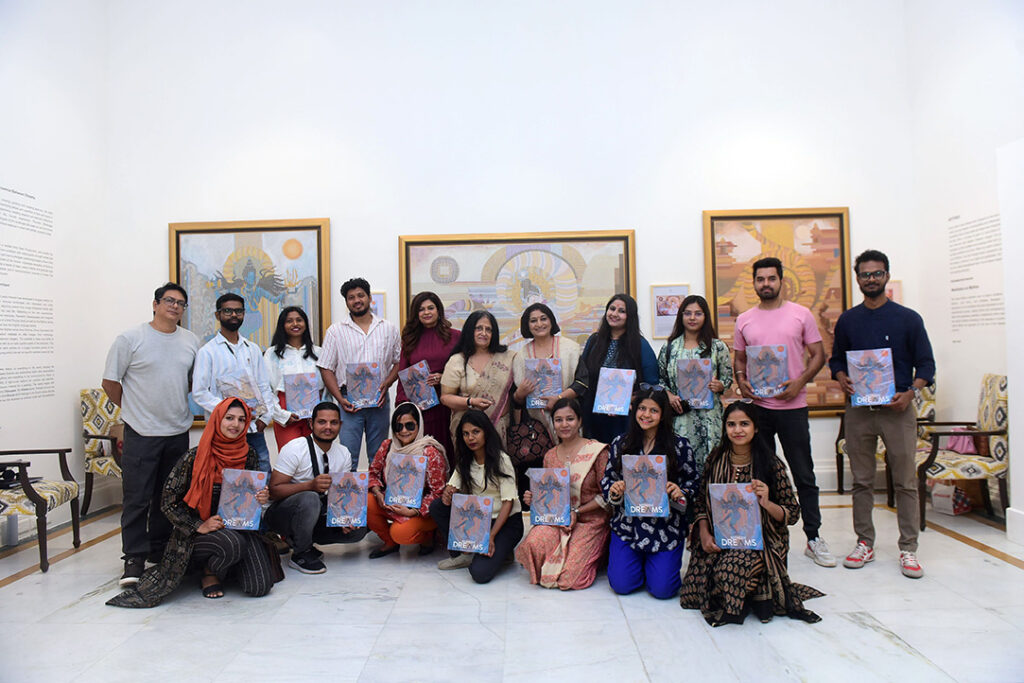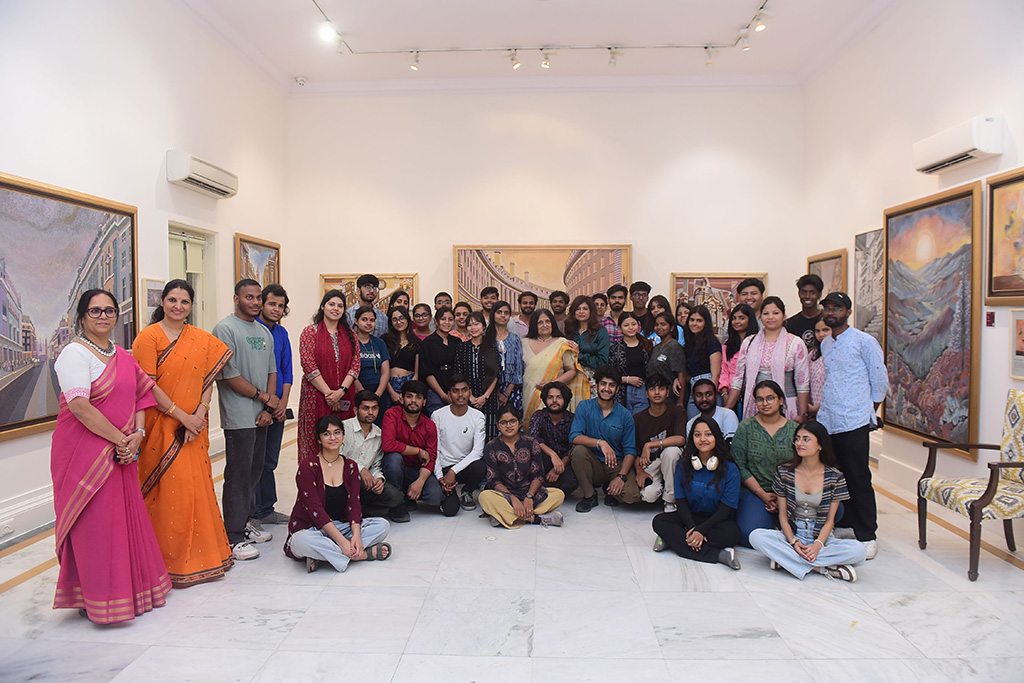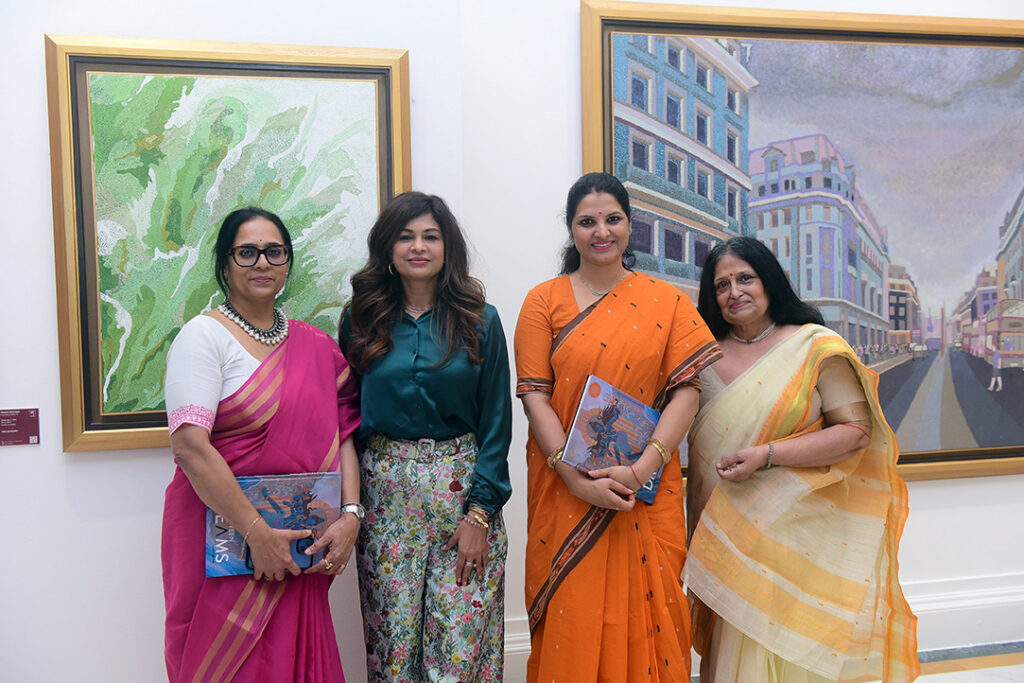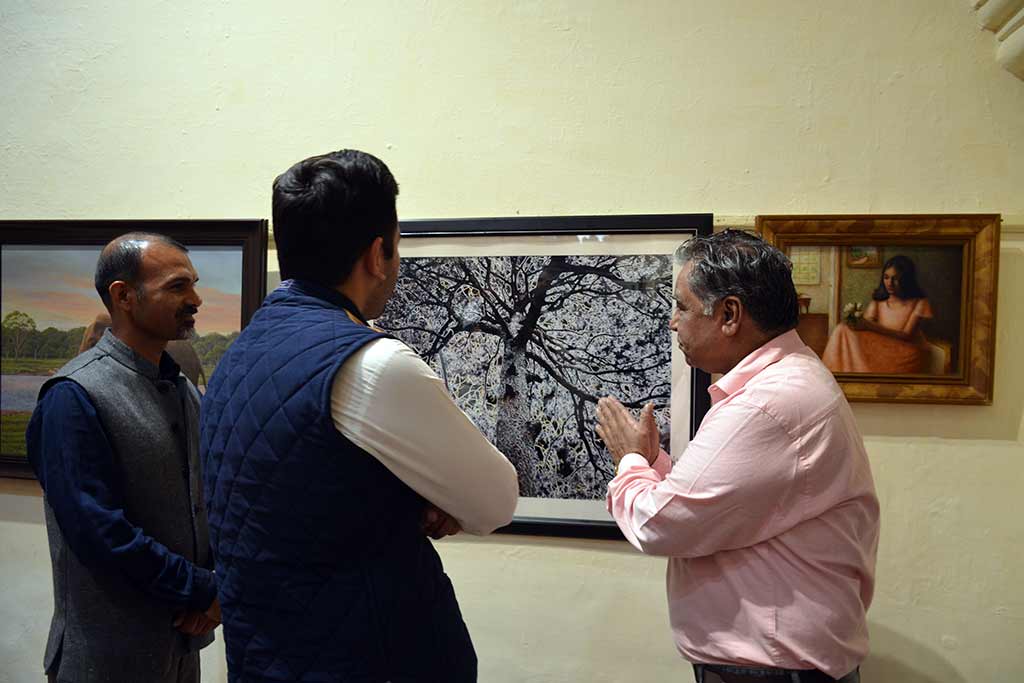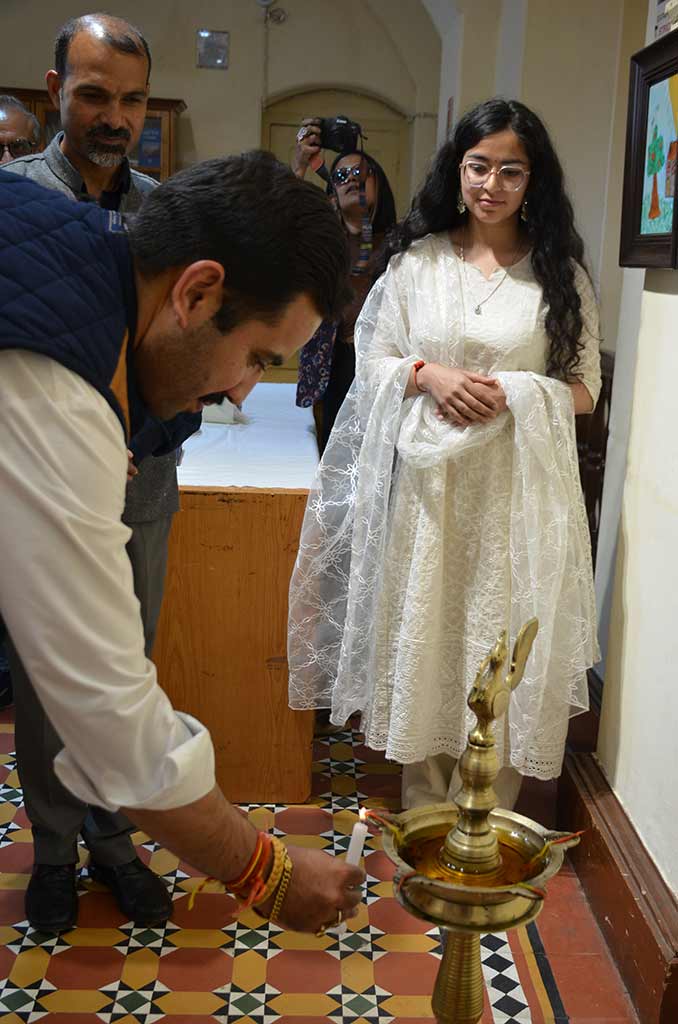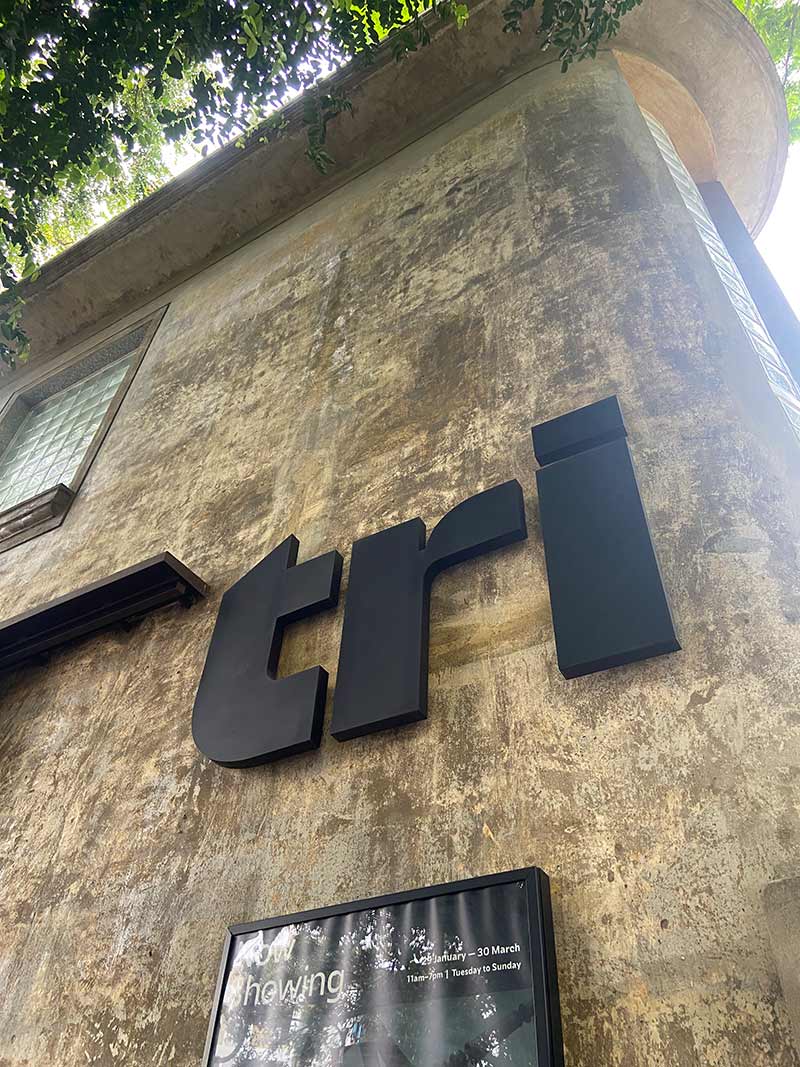Poonam Bhatnagar’s debut solo art exhibition ‘Between Dreams’, a melange of 24 acrylic-on-canvas works inspired by a spider’s web, saw a steady stream of visitors, including artists, art lovers and students and faculty of premier art institutions, showering admiration on Poonam for her creative brilliance with the brush.
Well-known filmmaker Muzaffar Ali inaugurated the six-day exhibition at Kalamkaar Gallery in Bikaner House on April 12 in the national capital.
Noted art historian and curator Uma Nair, who curated the exhibition organized by Masha Art Gallery, held a curatorial walk, giving insights into the intricacies of the artwork and the artist’s thought process. Art critic, film director and author Vinod Bharadwaj and renowned artist Phaneendra Nath Chaturvedi came and spent time at the exhibition on the final day (Wednesday), and appreciated the artworks.
Among the visitors were students and faculty of two prestigious institutions — Delhi College of Art and Jamia Millia Islamia Fine Arts Department.
From the captivating ‘Mythos’ series with its illusion effects to the enchanting ‘Vriksha’ series and the architectural nuances of ‘Cityscapes’ to the nostalgia-filled film stars in monochrome — each series enthralled visitors.
Bharadwaj was effusive in his praise of the illusion technique of Poonam’s ‘Mythos’ series.
For artist Chaturvedi, the exhibition had its sense of balance and depth of its variety in thematic divisions. ”Her technique of the illusion effect is extremely fascinating and one would like to see more such works,” he said of the ‘Mythos’ and ‘Cityscape’ series.
On Wednesday, 40 students of the Delhi College of Art visited with two faculty members and spent an hour listening to Uma Nair speak about the importance of originality as well as the versatile handling of compositional clarity in an artist’s evolution.
Nair pointed out the transition for Poonam from ‘Cityscapes’ to her ‘Mythos’ and ‘Vriksha’ series as also the beauty of going back to the past in the portraits of the four legendary actresses Meena Kumari, Madhubala, Suchitra Sen and Madhabi Mukherjee.
Poonam Bhatnagar, a trained textile designer, spoke about her technique and treatment of her canvasses and her ideas of colours as well as contours. She described how she makes a grid for her illusion technique and then spends unending hours filling in the textures that from close look appear like a textile texture and from far an optical illusion.
”My work is born of my own experiences and my love for traveling. I travel to different places, take lots of photographs and come back and decide that I want to mix architecture and landscape and the images of people. I’m happier doing large canvasses because it gives me width and depth to explore,” said the artist, who has been painting for the last 15 years, moving from portraits to abstract to cityscapes and landscapes.
Piyali Dasgupta, Programme Director of Bikaner House, and Rinku Meena, Deputy Resident Commissioner, also visited the exhibition. They were each gifted a copy of the catalog.
“The best thing for us is when students from institutions come and they are given an educative session,” said Rinku Meena.
Reaffirming the vision of Bikaner House as a premier place for exhibitions, Piyali Dasgupta said, “It gives us a great sense of satisfaction when exhibitions have programs that include the visits of young students from art colleges because it adds to the value of the exhibition and also gives it a longer life span.”
Jamia Millia Islamia University, Faculty of Fine Arts Dean Prof. Bindulika Sharma and faculty members and PhD visited the exhibition and spent an hour with the curator and artist.
Prof. Sharma said: “It is an honour for us to visit such shows, to look at the ingenuity of the artist and her perfection of technique as well as composition. It is a treat for the eyes.”
Uma Nair said: “The design display of a show is about intuition and also a sense of finding a continuity within the space given.”
Nair had curated a show of Muzaffar Ali last year and of Nandan Purkayastha in January this year – both at Bikaner House. “The beauty of Bikaner House is its architecture and the lay of the rooms we are given. When you curate a show the space has a wraparound effect. We grow as we exhibit and learn to play with possibilities that evoke emotive associations.”
Director of Black Cube and curator Sanya Malik said she found the exhibition wonderful.
Masha Art CEO Samarth Mathur said the show captivated visitors, giving them a “mesmerising journey” through its distinct thematic elements.
